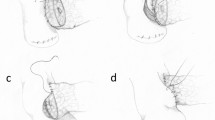Abstract.
Background/Purpose: Leakage of pancreaticojejunostomies has been associated with morbidity and mortality after pancreatic head resection. Different techniques have been described to perform a safe anastomosis to the left pancreatic remnant.
Methods: The pancreaticojejunostomy is preferably performed as an end-to-side anastomosis; drainage of the pancreatic duct by catheters or stents is not performed at our institution.
Results: Experience in more than 331 patients who underwent pancreaticojejunostomy indicates that a two-layer, single-stitch technique, with absorbable monofilament sutures and duct-to-mucosa adaptation, is a reliable method, with a pancreatic fistula rate of 2%.
Conclusions: The results obtained with the described technique of pancreaticojejunostomy indicate that the pancreatic anastomosis is very safe when performed by experienced hands and does not necessarily contribute to morbidity and mortality after pancreatic head resection. The prevalence of pancreatic fistulae and intraabdominal abscesses may further decrease, and the prevalence of nonpancreatic complications may have a more important impact on the outcome in the future.
Similar content being viewed by others
Author information
Authors and Affiliations
Additional information
Received: March 20, 2002 / Accepted: April 15, 2002
Offprint requests to: M.W. Büchler
About this article
Cite this article
Z'graggen, K., Uhl, W., Friess, H. et al. How to do a safe pancreatic anastomosis. J Hep Bil Pancr Surg 9, 733–737 (2002). https://doi.org/10.1007/s005340200101
Issue Date:
DOI: https://doi.org/10.1007/s005340200101




